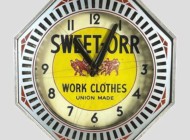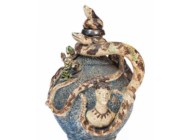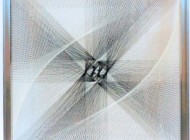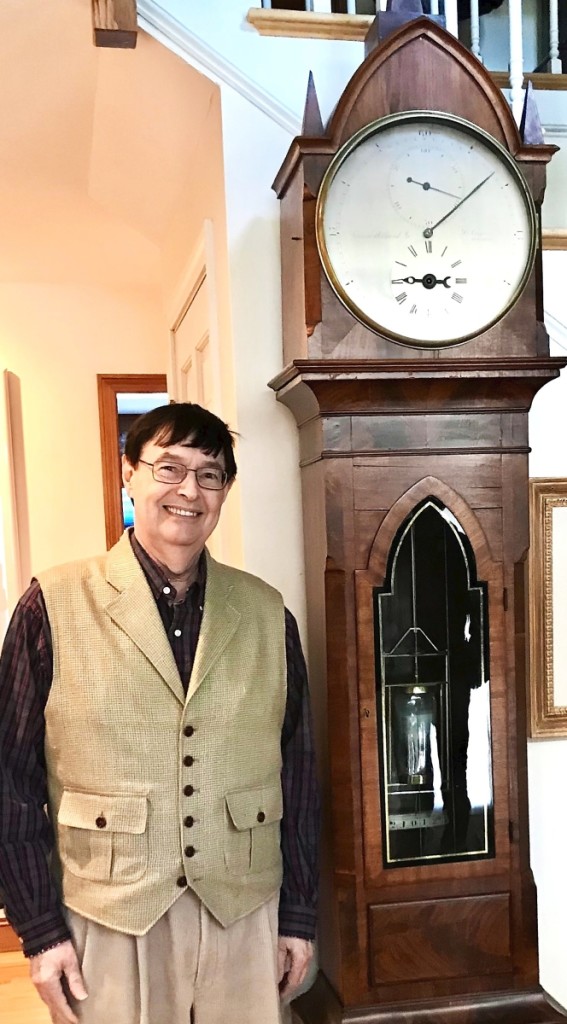
An outstanding example of David Newsom’s frequent generosity was his donation of a Simon Willard Jr (1795-1874) astronomical regulator to the Willard House & Clock Museum in Grafton, Mass. This extremely rare high-precision timepiece descended directly in the maker’s family, and we see it here with a rightfully smiling Newsom. Photo courtesy of Robert C. Cheney.
Review by Robert Frishman, Photos Courtesy Skinner Inc
MARLBOROUGH, MASS. – David Newsom would not have wanted this article written. A private person with no interest in public recognition, he nonetheless was a hugely generous donor and a serious collector of important watches and clocks. Tragically he died on February 29, 2020, probably one of the first Massachusetts Covid victims.
At a live auction on October 22, Skinner offered 107 lots from his estate in a dedicated sale, and many more lots, not attributed to him, in an online sale that concluded two days previously. The Newsom collection garnered just over $1 million. Those horological treasures are a clear window into his collecting passion, and they represent the parts of his collection that he had not yet donated, as he probably would have done if his lifespan had not been cut short.
David donated or provided acquisition funds for more than 50 important horological objects at the International Museum of Horology in La Chaux-de-Fonds, Switzerland, after befriending its then-director, Ludwig Oechslin. Among those donations was a complete set of the five sizes of E. Howard & Company banjo clocks, which now line a wall of that world-class museum. He also gave three watches by Luther Goddard (1762-1842), the first American watch manufacturer, and a 1970 ultra-high precision pendulum clock by Fedchenko.
As an active board member of the Willard House and Clock Museum in Grafton, Mass., he donated an extremely rare astronomical regulator by Simon Willard Jr, along with an Aaron Willard Jr shelf clock. His generosity was spontaneous and unselfish as he often responded without hesitation when his assistance was requested. As Robert Cheney, director of the Willard House recalls, David’s typical reply to a funding suggestion was “anything you need,” not “send me a detailed proposal or contract to consider.” To both the IMH and Willard House, he also regularly provided substantial financial assistance when urgent projects needed funding.
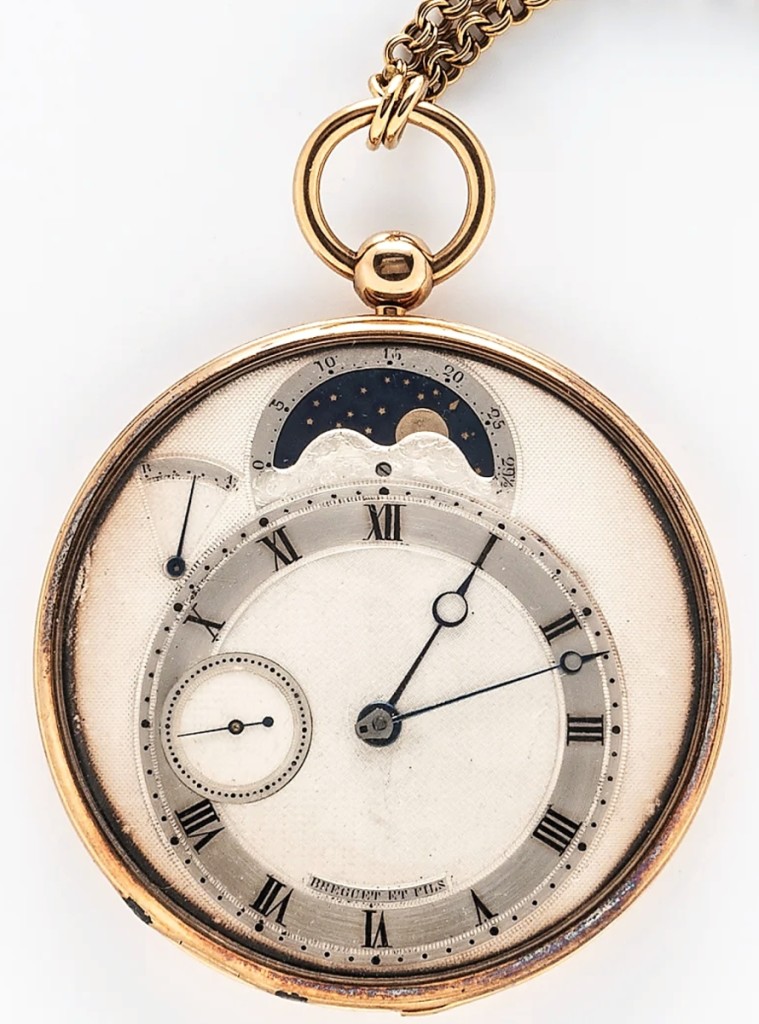
The sale’s highest lot, at $175,000, was a Breguet astronomical quarter-repeating watch, No. 2835, in an 18K gold case. The company confirmed on a framed certificate that the watch was sold in 1825 to Lord Henry William Paget. The watch was illustrated and described in George Daniels’ authoritative book The Art of Breguet.
David reportedly was one of the country’s first dot-com millionaires, having sold his data-management company in the early 1980s and then continuing for many years to consult with the corporate buyer. He was married to Carol Lee Natelson Newsom (1946-2003) who as a professional photojournalist covered international tennis and was active in promoting women’s tennis during the early days of the Women’s Tennis Association (WTA) and the Virginia Slims Tennis Circuit. She was the first woman photographer granted credentials on Centre Court at Wimbledon. She died of cancer in 2003.
It is unclear when and how his deep interest in horology was sparked, but 20-plus years ago he attended several two-week watchmaking classes at the school in Columbia, Penn., of the National Association of Watch and Clock Collectors (NAWCC).
Jim Michaels, the school’s instructor at the time, remembers that David was the first to call when the initial classes were announced, that he was in the very first class, and that he was the most enthusiastic of all his students, interested in everything but especially high-grade watches and those by the famous French watchmaker Breguet. David’s generosity extended to the NAWCC as well, offering frequent contributions and underwriting the school’s first promotional VCR video, which drew many more new students to the educational programs. Jim and David’s friendship continued into later years as they would attend horological auctions together after Jim founded his House of Time watch and clock repair business near Gettysburg, Penn.
David was also good friends with lifelong clockmaker John Losch who still lives less than a mile from David’s former home in Holliston, Mass. John was a clock-repair instructor at the NAWCC at that same time, but their friendship blossomed later when they discovered that they were nearly neighbors. John also recalls David’s selfless generosity, which included paying all travel expenses for international trips taken together, as David also did for Robert Cheney. Not interested in becoming a professional daily horologist, David instead wanted to know all that he could about the craft in order to best appreciate the wonderful objects that he was collecting and, at times, having them built or restored.
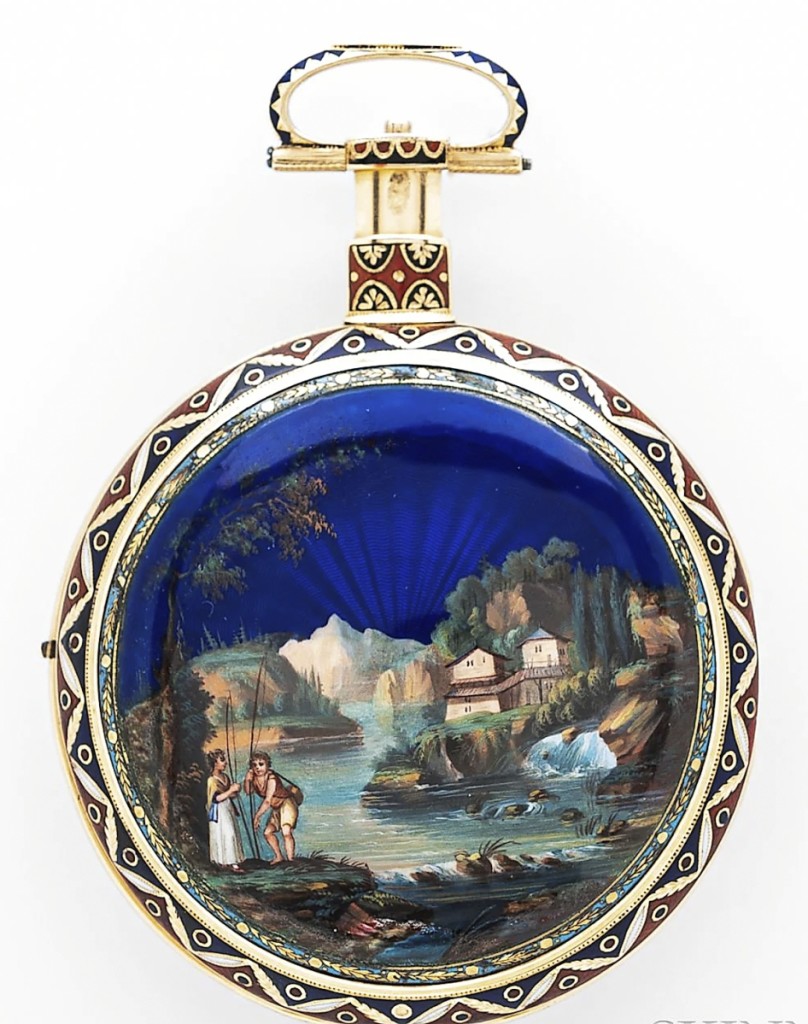
Among the best-sellers, also from the Sandberg Collection, was this Ibery of London watch made for the Chinese market. The colorful enamel scene of a couple enjoying an Alpine setting is attributed to the workshop of Jean-Louis Richter, circa 1810. The watch’s beauty, its fine fusee movement featuring a detent escapement, and its Antiquorum certificate all contributed to its $40,625 selling price, more than triple the $12,000 high estimate.
It is sad to think how much David would have loved being at his own auction. The Breguet watches would have fueled his passion for that esteemed maker, as would all the other high-end, rare and elegant watches that now belong to others. His special clocks would have drawn him in, too. Examples included antique long-duration, grand-sonnerie and astronomical wall clocks, a circa 1877 tower clock movement from London, and two modern high-precision floor-standing regulators. One of these, AutoRegulator S/N 1, was built to David’s order by Robert Shannon of Leominster, Mass. It features 13 dials and near-perfect accuracy based on a cesium atomic clock and GPS.
Two lots had provenance from Seth Atwood’s Time Museum in Rockford, Ill. That museum closed more than two decades ago and its collections were dispersed during several epic Sotheby’s sales where David attended and actively bid. A Waltham crystal-plate watch was one; another was a unique low mahogany and glass display table with an Elgin Model 600 marine chronometer mounted on top and with compartments below that displayed the chronometer’s individual parts. The loaded table’s new owner paid just $850 for it.
Only a handful of people actually attended the live auction, Robert Cheney among them along with a watch dealer in the room snagging many of the mid-range lots. However, as usual, most bids came from the phones, internet platforms and absentees who placed hopeful bids in advance.
In-person previewing was possible, although only by advance reservation and for just one-hour time slots when available during the few presale days. Again as usual, not many bidders came to preview, perhaps in this case feeling reassured that if these items belonged to David Newsom, they must be okay. The online catalog offered multiple high-resolution photographs, particularly necessary for complicated watches, and condition reports. Unusual was a complete printed 32-page catalog, mailed in advance and free at the preview, that for this sale was an upgrade from recent printed brochures that simply are teasers for the complete catalog offered online.
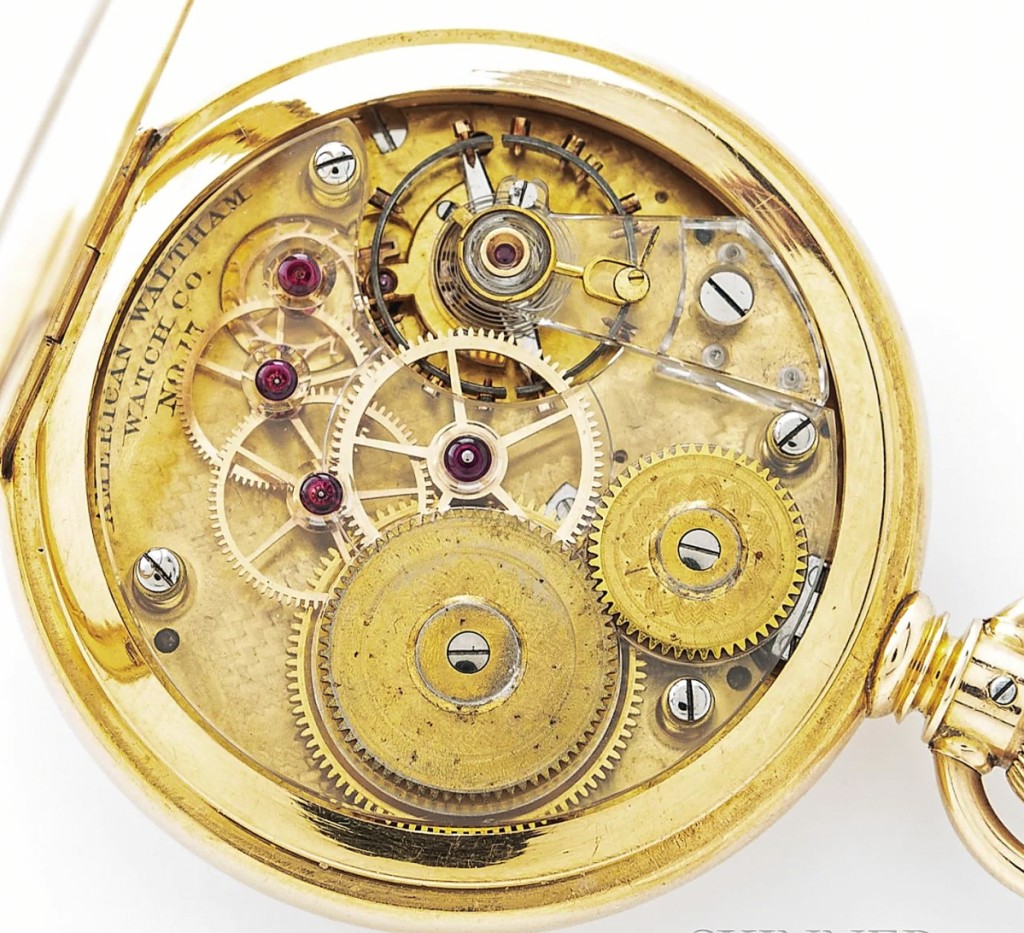
Waltham’s skilled watchmakers also played with nonmetallic movement plates, although not as production models. This watch, No. 17 and circa 1885, has transparent crystal movement plates which make it rare and highly desirable and which allow users to view the wheels normally hidden between brass plates. A small number of such fragile “crystal plate” Walthams are known. The watch took $40,625.
Whether bidders had the printed or online versions of the catalog, they certainly bid with gusto. A majority of the lots sold at multiples of the high estimates, and most others were within or above the estimate ranges. Only a few sold under estimate or were passed. Skinner’s normally pessimistic estimates proved remarkably low even for their standards that may be designed to encourage entry-level bidding rather than reflect true market value. Most bidders, for example, would have been thrilled to buy an unmarked silver tourbillon watch for the $400 high estimate, but not for the $10,625 eventual price.
But we also could dare to think, based on this and other recent auctions, that prices for antique timekeepers are not only off the barrel’s bottom but actually climbing back towards their past days of glory.
All reported prices include the buyer’s premium. For more information, www.skinnerinc.com or 508-970-3131.

























